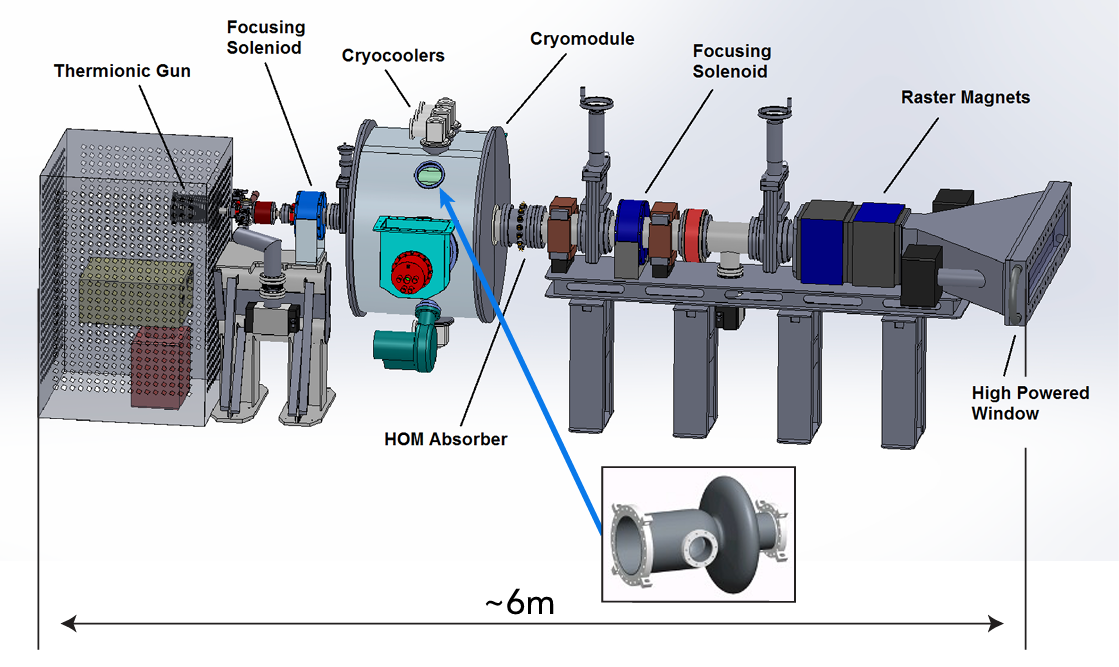
Particle Accelerators for Environmental Applications
Jefferson Lab is home to world-renowned experts on Linear Particle Accelerators (LINAC’s) and superconducting radiofrequency (SRF) technologies. LINACs accelerate electrons to near the speed of light in the form of a controlled beam. Low power variants currently used for medical applications, high power variants used for basic research in matter and energy. Recent advancements allow for increased power at reduced size and cost, enabling miniaturization, mobilization, and novel applications. One such application is on-site remediation of hard to destroy chemicals, such as PFAS and PFOAS, known as "forever chemicals".
The development of new, compact SRF accelerator designs promises to make this technology more viable, efficient, and accessible for a range of environmental and industrial applications.
Why E-Beam Technology for PFAS?
- Beams can be tuned to break down the molecular structure of targeted chemical compounds.
- Successful demonstration of breakdown of a small sample of 1,4-dioxane in municipal water and wastewater, research on PFAS is ongoing and initially positive.
- Principles suggest feasibility of targeted destruction of specified PFAS compounds.
How does it work?
Electron beam irradiation is a method that uses energetic electrons to produce highly reactive species in the irradiated medium itself which breakdown the target contaminants through secondary reactions. In case of a large concentration of contaminants, the electrons may also directly break the molecular bonds of the corresponding compounds. Electron beam irradiation for environmental remediation has been successfully applied to wastewater and flue gases. In the case of e-beam irradiation of water, the e-beam generates reductants (solvated electrons and hydrogen) and oxidants (hydroxyl radical, hydrogen peroxide, hydroperoxyl radical) which can degrade pollutants through different reactions, such as chain oxidation, formation of insoluble compounds, coagulation of colloids.
Extensive studies on the efficacy of electron beam irradiation of water containing many organic chemical compounds, including pharmaceuticals and personal-care products, were done in the US at the Electron Beam Research Facility at the Virginia Key wastewater treatment plant in Miami-Dade County in the late 1980s.
Download our printable PDF fact sheet on this technology.
Read the research and supporting articles about this technology.


